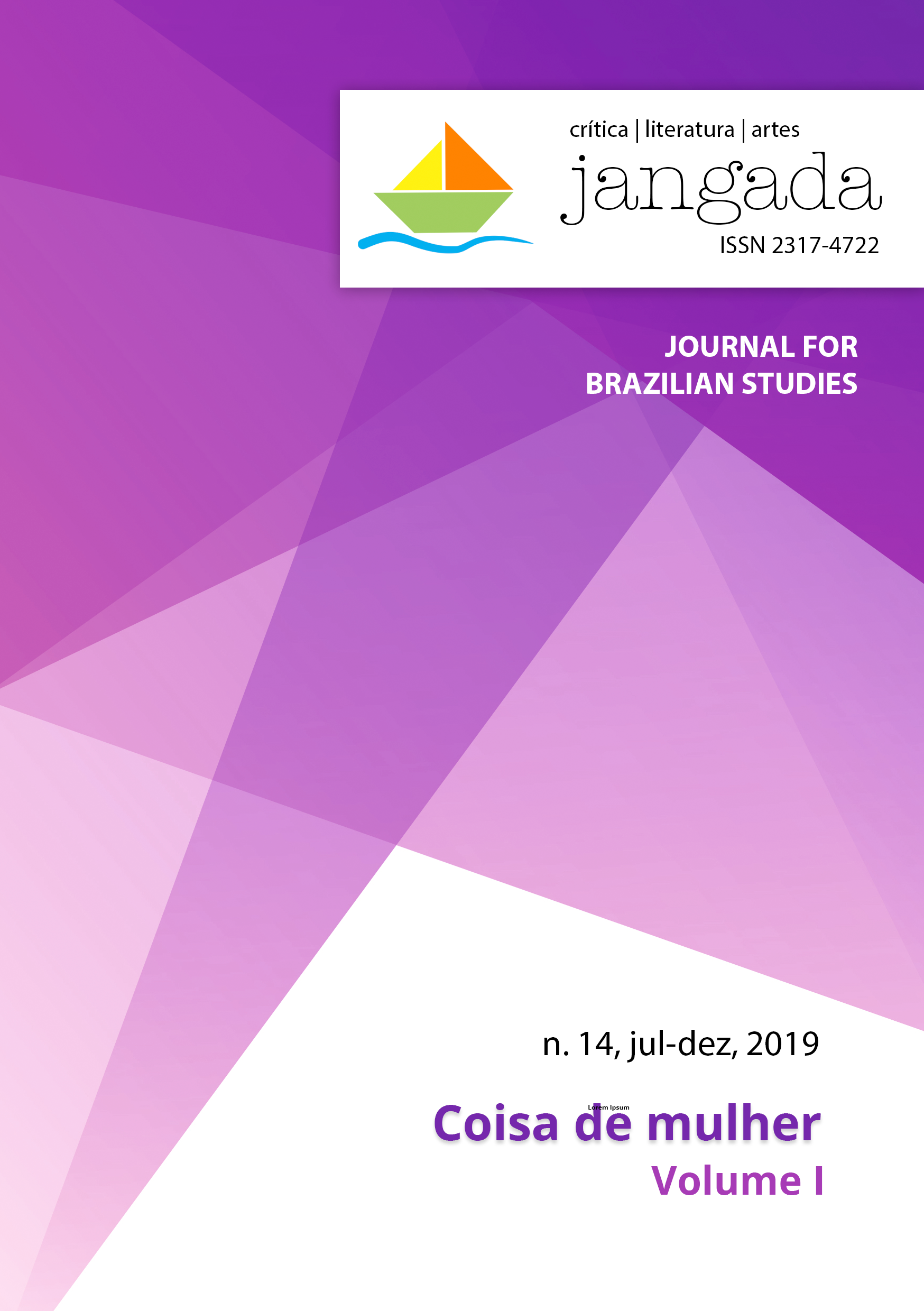Reencenação e pós-apocalipse na obra fotográfica de Francesca Woodman
DOI:
https://doi.org/10.35921/jangada.v1i14.234Keywords:
Francesca Woodman, 1970s, Women Utopia, Post-apocalypse, Tableaux vivantsAbstract
Francesca Woodman's photographic work is part of an American generation of photographers, that created during the seventies, which includes Ana Mendieta and Cindy Sherman, among others. They were all still imbued with the spirit of the second feminist. Besides the obvious astonishing aesthetic quality, Woodman's work is deeply questioning of gender roles, which she always tends to reverse and erase in her photographs in a very intelligent way. Thus, her Tableaux Vivants are, at this light, particularly significant. In them, she recreates famous paintings of the world artistic canon and biblical passages, questioning the notions of gender and the validity of official artistic historiography, which is mainly dominated by a masculine point of view. At the same time, her photographs shape a post-apocalyptic world and propose a feminist utopia in response. I intend to analyze all these elements.
Downloads
References
ANZIEU, D. The skin ego. New Haven and London: Yale University Press, 1989.
BEAUVOIR, S. O segundo sexo: Volume II. Trad. Sérgio Milliet. 2 ª Edição Lisboa: Quetzal Editores, 2015. [1949]
BLESSING, J. “The geometry of time. Some notes on Francesca´s Woodman´s Video”. In: C. Keller (Ed.), Francesca Woodman. Exhibition Catalogue (p. 203). New York: Solomon R. Guggenheim Museum, 2011.
BERGER, J. Ways of seeing. London: Pinguin Books, 1990. [1972]
________. After the end. Representations of the post-apocalypse. Minneapolis: University of Minnesota Press, 1999.
BERNE, B. “To tell the truth”. In: G. Schor; E. Bronfen (Eds.), Francesca Woodman. Works From the Sammlung Verbund (p. 89-93). Nova Iorque: D.A.P./Distributed Art Publishers, 2014.
BRONFEN, E. “Leaving an imprint. Francesca Woodman´s photographic tableaux vivants.” In: G. Schor; E. Bronfen (Eds.), Francesca Woodman. Works From the Sammlung Verbund (p. 11-30). Nova Iorque: D.A.P./Distributed Art Publishers, 2014.
DELEUZE, G. A imagem-tempo. Cinema 2. Trad. Sousa Dias. Lisboa: Assírio & Alvim, 2015. [1985]
HEFFERNAN, T. Post-apocalyptic culture. Modernism, post modernism and the twentieth-century novel. Toronto: University of Toronto Press, 2008.
LACAN, J. Seminário. Livro 11. Os quatro conceitos fundamentais da psicanálise. Rio de Janeiro: Zahar Editora, 1988. [1964]
PIPPIN, T. Apocalyptic bodies. The biblical end of the world in text and images. London: Routledge, 1999.
RAYMOND, C. Francesca Woodman and the kantian Sublime. New York: Routledge, 2010.
________. Francesca Woodman´s dark gaze. The diazotypes and other late works. New York: Routledge, 2016.
RICHES, H. K. Skin, surface and subjectivity. The self-representational photography of Francesca Woodman. Tese de doutoramento, University College London. Londres: Reino Unido, 2004. Retirado de: http://discovery.ucl.ac.uk/1383222/1/405969.pdf
SCHOR, G.; BRONFEN, E. (Eds.) Francesca Woodman. Works from the Sammlung Verbund. Nova Iorque: D.A.P./Distributed Art Publishers, 2014.
SCHOR, G. “Introductory remarks and acknowledgements”. In: G. Schor; E. Bronfen (Eds.), Francesca Woodman. Works From the Sammlung Verbund (p. 7-9). Nova Iorque: D.A.P./Distributed Art Publishers, 2014.
---------- “Props as metaphors – arranged by Francesca Woodman”. In: G. Schor; E. Bronfen (Eds.), Francesca Woodman. Works From the Sammlung Verbund (p. 33-49). Austria: Sammlung Verbund, 2014a.
SOLOMON-GODEAU, A. “Just like a woman”. In: A. Gabhart; R: W. Krauss (Eds), Francesca Woodman Photographic Work (14-35). Wellesley: Wellesley College Museum and Hunter College Art Gallery, 1986. Retirado de: https://www.galeriewinter.at/en/artists/francesca-woodman/abigail-solomon-godeau-just-like-a-woman/
________. “Body double”. In G. Schor; E. Bronfen (Eds.), Francesca Woodman. Works From the Sammlung Verbund (p. 73-87). Nova Iorque: D.A.P./Distributed Art Publishers, 2014.
TISSERON, S. “Intimité et extimité”. Communications, Volume 88, Nº 1, 83-91. 2011. Retirado de: http://www.persee.fr/issue/comm_0588-8018_2011_num_88_1
WOODMAN, F. Some disordered interior geometries. Philadelphia: Synapse, 1981.
REFERÊNCIAS FÍLMICAS E VIDEOGRÁFICAS
COELHO, E. P. Portugalmente III. Lisboa: RTP 2, 1999. Retirado de: https://arquivos.rtp.pt/conteudos/francesca woodman/#sthash.TnmVOYTy.RSVbYvMC.dpbs
WILLIS, C. S. The Woodmans. C. Scott Films, 2010. Retirado de: https://www.youtube.com/watch?v=5zqNUdtCwkU
WOODMAN, F. Francesca Woodman´s video-work, 1976-1981. Retirado de:








